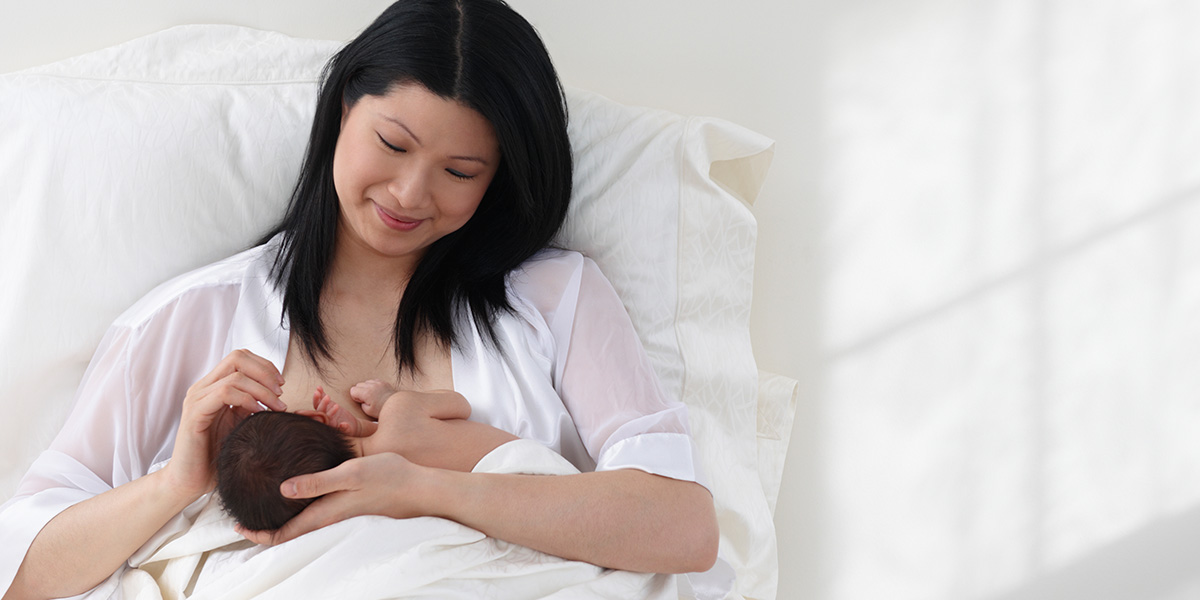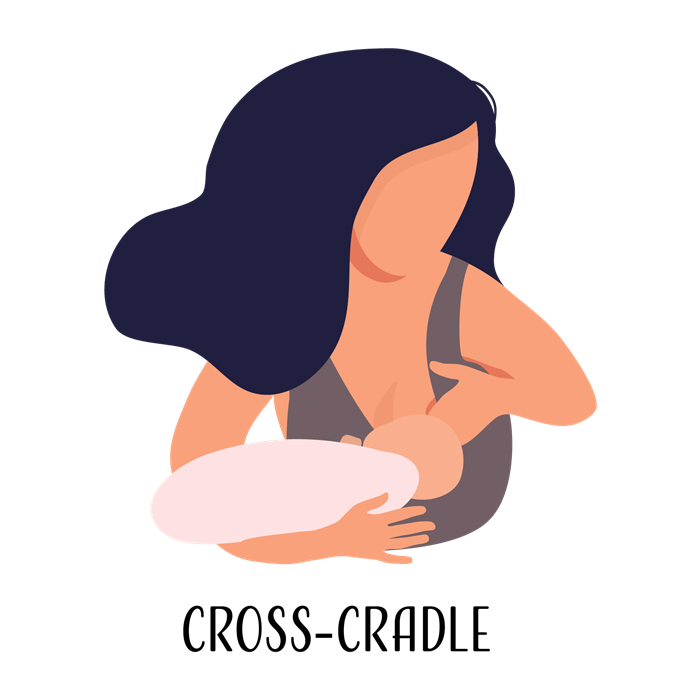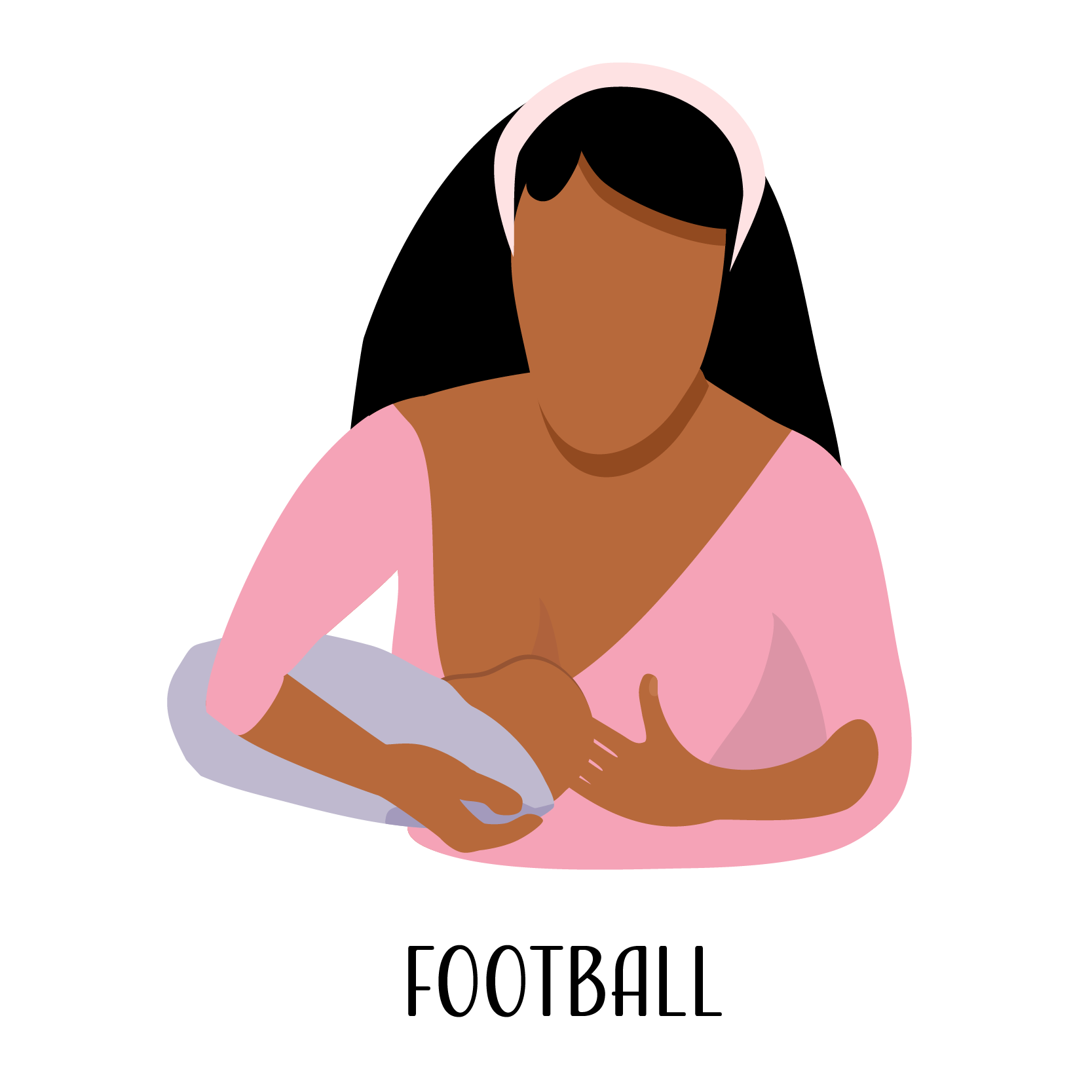
Breastfeeding your newborn can involve a lot of trial and error. There is no one-size-fits-all approach. What works for one mama simply may not for another.
Trying different breastfeeding positions (or holds) can help you and your baby find success as you learn to breastfeed. Here are some of the most common nursing positions. Give them all a try and see what works best for both of you!
General Breastfeeding Tips
- Get comfortable: Find a spot that allows you and baby to breastfeed comfortably. Use pillows for support behind your back and under your arms so that you’re not hunched over while nursing. And prop your feet up if possible!
- Position baby properly: For a good, comfortable latch, your baby should be facing your body, with their mouth and nose facing your nipple (baby shouldn’t need to turn their head to reach your breast). Use pillows to prop baby up so they are at nipple height. There are even specially designed breastfeeding pillows on the market for this very reason.
- Chin to Breast: When it’s time to breastfeed, ensure your baby opens their mouth wide and their chin touches your breast first as they latch. Aim your nipple toward the roof of their mouth to ensure they take in enough of your breast for a good latch. Here’s a short video with more guidance on getting your baby to latch properly.
Cross-Cradle Position
The cross-cradle position is one of the best holds for the early days of breastfeeding, as it allows for the most support of your newborn’s neck. How to do the Cross-Cradle Position:

- Sit up straight in a comfortable chair with your back and arms supported.
- Hold baby parallel to the ground (facing you) in the crook of the arm opposite of the breast you’re nursing from. For instance, hold baby in your left arm if nursing from the right breast, and vice-versa.
- Support the back of baby’s head and neck with the hand of the arm that’s holding baby, by placing your hand behind baby’s ears and neck with thumb and index finger behind each ear. Baby’s neck should rest comfortably in your hand with your palm between their shoulder blades
- Use your other hand to make a “U” shape, and hold your breast from underneath to help baby latch.
- Bring baby to your breast (don’t bend or lean over) and help them latch by pushing baby’s shoulder blades quickly toward your breast as they open their mouth.
Cradle Position
The cradle position is commonly used after you and baby have a bit more experience breastfeeding, and baby knows how to latch well. How to do the Cradle Position:

- Sit up straight in a comfortable chair with your back and arms supported.
- Hold baby parallel across your lap with their mouth level to your nipple. Baby’s ear, shoulder and hips should be in a straight line.
- Support baby with the arm on the same side as the breast baby will nurse from (not the opposite arm as in the cross-cradle position), with baby’s head resting in the crook of your elbow.
- Bring baby close to your breast, and use your opposite hand to make a “C” shape to support your breast and help baby latch.
Football Hold
The football (or “clutch”) hold is great for women recovering from a C-section, as it keeps baby away from your incision. Women with large breasts or a forceful let down also find success using this position.
How to do the Football Hold:

- Get comfortable in a chair or in bed with a pillow on your lap or beside you, and sit with your baby alongside of you with your elbow bent.
- You will need one or more pillows behind your back to make room for baby’s body to lay at your side. If baby has to curl up, they may also tuck their neck, which makes it harder to latch.
- With your open hand (on the same side as the breast you’re nursing from), support baby’s head and face them toward your breast. Baby’s back will rest on your forearm.
- Use the opposite hand to create a “C” shape to support your breast and help baby latch.
Side-Lying Hold:
When you’re resting or it’s the middle of the night, breastfeeding while side-lying can be a nice way to relax and feed your baby. However, it’s important to put baby back in their bassinet or crib to sleep after they’ve finished breastfeeding. This is also a great position for C-section mamas, as there’s no need to hold baby across your lap. How to do the Side-Lying Hold:

- Lie on your side with your baby facing you and your breast (also on their side), with their head at your breast and their feet toward your feet.
- Support baby’s body with your bottom arm, or use a rolled up blanket or pillow to keep baby from rolling away from you.
- Using the other hand, guide your nipple to baby’s mouth and encourage baby to latch. Remember to bring baby to your breast, don’t lean over toward baby.
When your baby is born, the Lactation Consultants at Women & Babies Hospital will help ensure you and baby are off to a good start on your breastfeeding journey, and help you try several different breastfeeding positions. And you’re not on your own once you leave the hospital, mama. Our Breastfeeding Support Program offers comprehensive lactation services including outpatient consultations, and a phone line for questions: 717-544-3335.